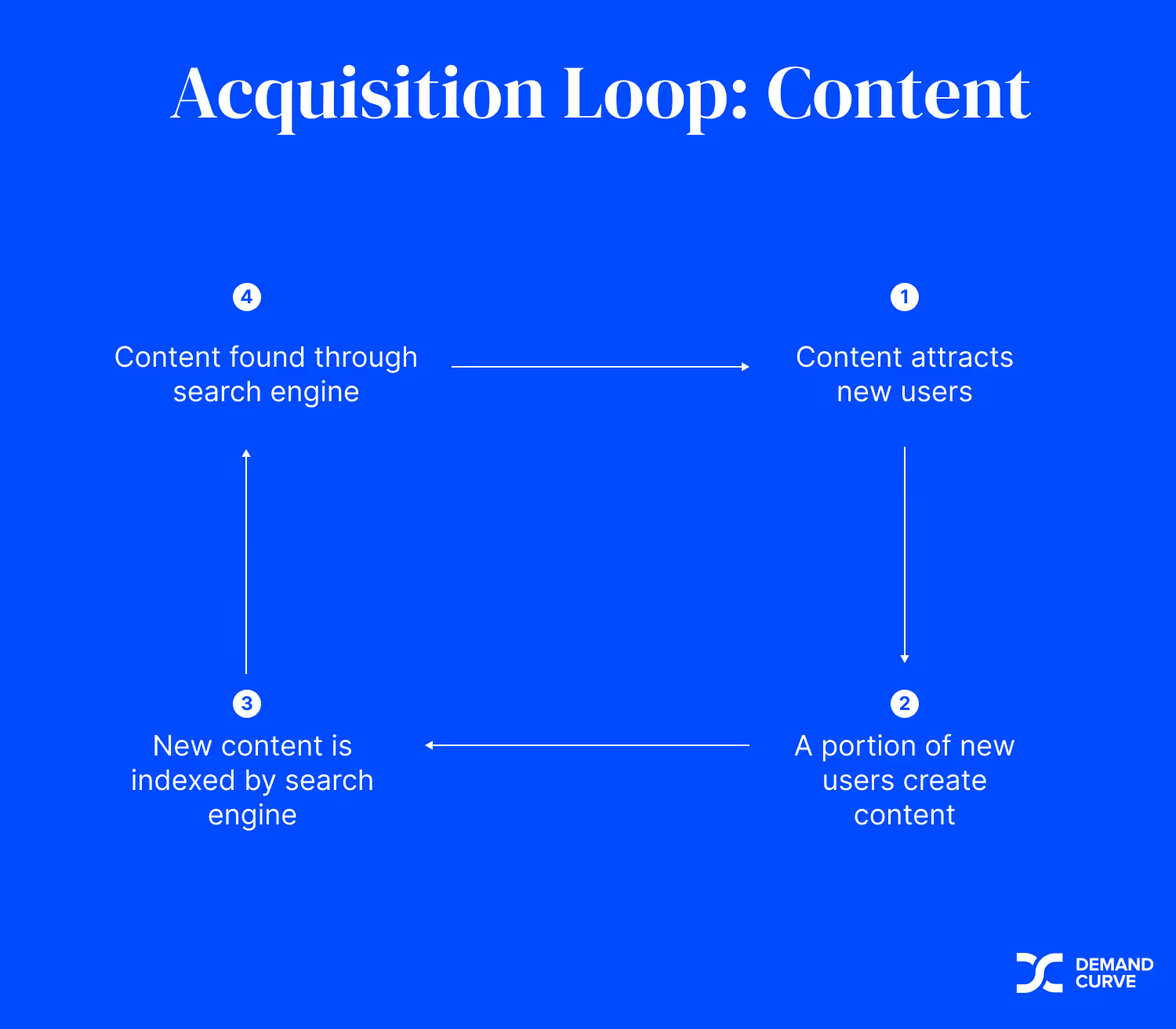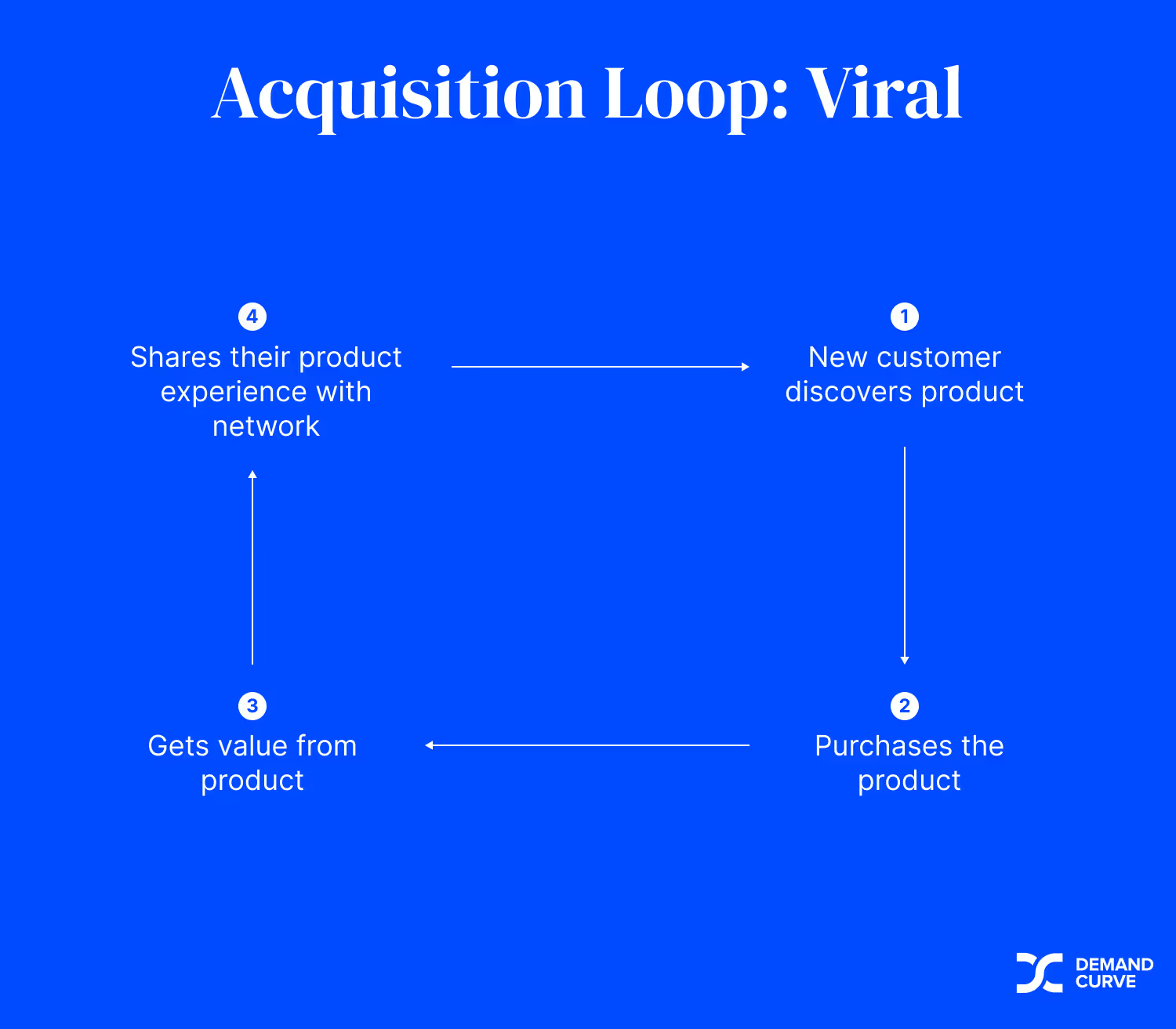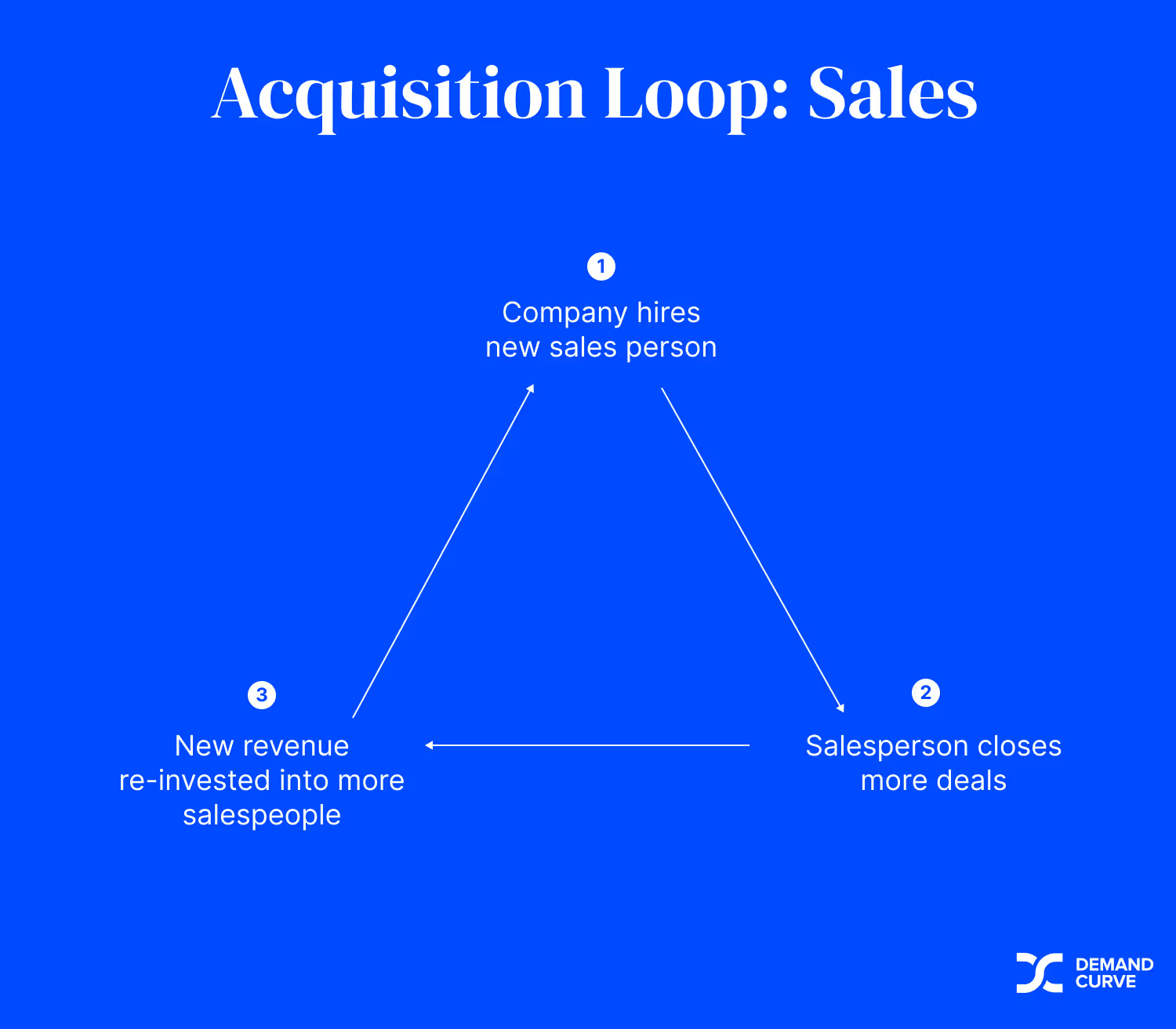The Major Acquisition Lanes
While there are many different "channels," there are only a few acquisition "lanes." Lanes are simply broad umbrella categories that channels fall into.
For example, "paid acquisition" is a lane that consists of Facebook ads, Twitter ads, Instagram ads, Google Search ads, and all other paid advertising channels.
After helping over 1,000 startups grow, we've found that there are only four major acquisition lanes that drive scalable growth:
- Paid acquisition
- Content acquisition
- Viral acquisition
- Sales acquisition
We'll introduce each and highlight a few particularities that make them unique. After discussing the four acquisition lanes, we'll revisit unscalable channels to consider how they relate to acquisition.
Paid acquisition
Paid acquisition refers to any channel, tactic, or marketing activity in which you're paying for new customers, traffic, or exposure. Advertising channels are the most popular form of paid acquisition. Affiliates and most influencer campaigns also fall under paid.
Note that we mostly cover digital paid acquisition channels. However, traditional forms of paid acquisition, like billboards and TV ads, are also options. We'll give a high-level overview of them in a future lesson.
Here's an example of what a basic paid acquisition loop might look like:

Advantages
- Short feedback loop between experimentation and results
- Strong control over the channel's outputs like price, volume, and target audience
- You can get started with very low budgets
Disadvantages
- Highly competitive
- Takes a lot of effort to maintain performance over time
- A "reverse economies of scale" effect: Things get more expensive/inefficient at scale
Company types that work best
- Products with moderate lifetime value (LTV) or high average revenue per user (ARPU). Low-value products likely won't be profitable, and expensive ones generally struggle to convert via ads alone.
- Products with very short sales cycles
- Visual, aesthetically appealing products
- Products with simple value props
- Products serving large markets
Content acquisition
Content acquisition refers to acquiring customers by showing them content that directly or indirectly relates to your product.
There are three broad categories of content acquisition:
- Editorial SEO: Search engine optimization (SEO) is a method of publishing on your website about topics that get searched on search engines like Google. Over time, Google will begin sending traffic to your site if the algorithm deems your content to be high quality. This traffic has no direct cost, but it will require you to editorialize your content to fit within the search engine's constraints.
- User-generated content: User-generated content (UGC) is content that your users create on your behalf. For example, the vast majority of content on YouTube is not created by YouTube. With UGC, content is created at scale without increasing your production costs. UGC can be distributed in two ways:
- SEO distribution: Similar to editorial SEO, UGC SEO relies on search engines to send traffic to the content created by your users. LinkedIn profiles are an example of SEO-distributed UGC.
- Viral distribution: UGC that's distributed by the user who created it is called viral UGC. A tweet that's seen by millions of people is an example of viral UGC.
- Viral content: Viral content spreads via sharing, not through search engines. It's a fairly unpredictable strategy, but content can be designed with the channel in mind to increase the likelihood of it being shared.
Here's an example of what a basic content acquisition growth loop might look like:

Advantages
- Doesn't always require direct cash investment—only costs time to get started
- Scales well
- Less intrusive than paid advertising
- Create once, distribute forever
- Traffic compounds over time
- Allows your users to become your biggest growth mechanism
Disadvantages
- Expensive at scale
- It can take a long time to get results
- At the mercy of search engine algorithms
- Competition (especially SEO) can be insurmountable
Company types that work best
- Product's usage enables user content creation
- Products or problems that have existing search volume
- Complex products or spaces in which education is needed
- Spaces or industries in which thought leadership, trust, or validation is required
- Products with access to (or the ability to create) proprietary data
Note: While all three strategies can be very effective, we'll primarily focus on editorial SEO and viral content. Editorial SEO and viral content are channel-led strategies, whereas UGC is product-led and therefore outside the scope of this program.
Viral acquisition
At its core, virality means that growth is driven by users of a product spreading the word and inviting others to use the product as well.
People often assume that virality is simply word of mouth. But there are actually several forms of virality. We'll examine the two major categories:
- Incentivized virality: As the name suggests, this is when users get an incentive (e.g., money, product features, exclusive content) in exchange for inviting others to the product. The referral programs ("invite a friend and get $10") made famous by the likes of Dropbox, Airbnb, and Paypal are all examples of incentivized virality.
- Organic virality: Organic virality can be broken down into a few different sub-categories:
- Word of mouth: Good ol'-fashioned word of mouth is a classic type of organic virality. Users love a product so much that they invite their friends and family. Word of mouth takes place outside of the product experience.
- Pull virality: This is when users of a product invite others because doing so increases the value they get out of the product. Slack—or pretty much any other collaboration tool—is a great example of this. For someone to truly get the full value out of Slack, they need their co-workers to join as well. So users "pull" in others to maximize their own utility. Pull virality applies to every social media platform, too. Instagram isn't much fun if you're the only one using it.
- Push virality: Push virality involves existing users exposing (not inviting) others to the product through natural usage. This applies to both physical and digital products. Every time someone walks around wearing their AirPods, they're exposing the product to other potential customers. On the digital side, take Superhuman, an email service. Every time a Superhuman user sends an email, it says "sent via Superhuman" in the footer. Again, the users aren't directly inviting their contacts to Superhuman. But they are creating awareness each time they use it.
Here's an example of what a viral acquisition growth loop might look like:

Advantages
- Super low cost
- Scalable
- Leverages the most trusted way people buy: recommendations from their friends
Disadvantages
- Very difficult to get right
- Hard to control or influence
- Requires a critical mass of people to take effect
Company types that work best
- Products that gain utility with every new user (e.g., networks, social products)
- Products that are innately fun or social
- Products that are simple with a broad appeal
Sales acquisition
Sales tends to fall outside the growth marketing scope, but it's one of the top channel-led strategies. Why is it so powerful? Because it too, like every strategy mentioned above, is scalable. A salesperson works to find and close new customers. Revenue is captured from those customers. And that revenue can be directly invested into hiring more salespeople, which in turn leads to more revenue.
Sales consists of two parts:
- Lead generation: Lead generation is the act of searching for people or businesses that fall into your target audience. The goal of lead generation is to identify a prospective customer and find a channel to directly reach them through. Once a "lead" has been identified, it's then passed to the direct sales team to make first contact. Lead generation is typically done through content marketing, paid marketing, or cold outreach.
- Direct sales: Direct sales is the process of turning leads into customers. Direct sales can happen over the phone, in person, and sometimes over email. It often involves educating and negotiating with a prospect until a deal is finalized.
While we don't spend much time on direct sales in this program, we'll cover lead generation in depth.
Here's an example of what a sales acquisition growth loop might look like:

Advantages
- Allows for very niche targeting at scale
- You can create systems that lead to a repeatable and predictable acquisition engine
- Unlike other channels, messaging can be tailored in real time, which can lead to a higher likelihood of closing a sale
- You're able to develop a personal relationship with your prospective customer
- Allows you to explain your product in great detail
Disadvantages
- Very expensive
- Requires constant hiring, training, and up-skilling of your sales team
Company types that work best
- Products with long or complex sales cycles
- Expensive products
- Products that require training to use
- Products that require custom quotes or configurations
Unscalable channels
Unlike the acquisition lanes we just highlighted, unscalable acquisition channels won't compound in effectiveness over time. They can't make use of their outputs and are typically only effective for a short amount of time.
For example, public relations (PR) is only effective when publications are writing about your startup. A single mention in a highly regarded publication might lead to a few hundred signups, but it will only be visible on the main page for a few hours before getting replaced by another post. Each new PR write-up will require the same amount of effort to get published, and the results from one campaign can't be directly reinvested into future PR campaigns.
Advantages
- Many are cheap
- Can supplement scalable channels
- Helps to kick-start scalable channels
- Less competitive
Disadvantages
- Doesn't have scale potential
- Many are one-offs and not repeatable
Company types that work best
- Early-stage companies looking to get an initial flow of users and customers
- Companies looking to augment their primary scalable channel


